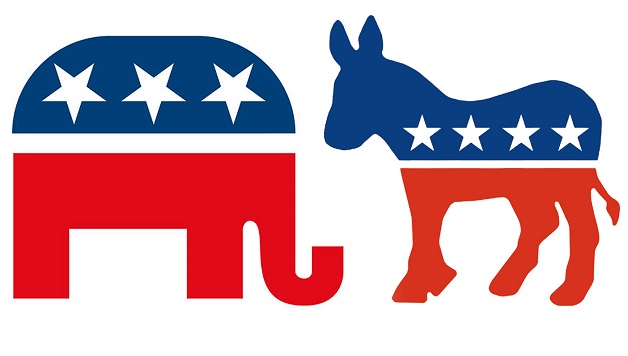By Ty Moore, Nader Campaign Coordinator, University of Minnesota
The Nader campaign provoked an important debate on the corporate character of the Democratic Party and the need to break from it, but it also inspired a discussion about how best to organize this break. In this respect, Socialist Alternative has from the outset warned against a number of political mistakes Nader has made.
Most striking has been Nader’s failure to put his campaign resources and his personal authority behind an effort to forge a new political party. This election also revealed more clearly than ever the limits of the Green Party, when their leadership capitulated to the “Anybody but Bush” pressures. More generally, Nader has demonstrated the capacity, especially in the 2000 campaign, to appeal to much broader forces than the Greens, particularly working-class people and sections of the labor movement.
Had Nader used the momentum of his 2000 campaign to unite the significant forces behind him into an ongoing political organization, and spent the last four years fighting to expand this organization through involvement in the important movements that developed under Bush, his 2004 campaign would have been much stronger. And despite the difficult circumstances of this election and Nader’s much smaller base of support, he still should have used the election to raise the idea and organize the struggle for a new party, aimed at uniting social movements in a political struggle against Corporate America.
How different would the election have been if we had our own party? A party run and funded by ordinary people rather than corporate money would not have run a losing pro-corporate, “Bush-lite” campaign like Kerry’s. The resources of the anti-war movement, the women’s organizations, and especially the powerful labor movement would be much more effective if they were spent on a party and candidate that actually supported the interests of their members.
This election, the unions spent $160 million on the Democrats, the party that brought working people job-slashing trade deals like NAFTA and the WTO. What would have happened this election had they spent that $160 million on Ralph Nader?
Nader’s campaign could have been a powerful voice raising these ideas and rallying people to break the unions and other social movement organizations away from the Democratic Party, convincing rank-and-file activists of the need to build a party of their own. Unfortunately, Nader has not done this.
After his 2000 campaign, and again this year, Socialist Alternative explained the best way forward would be for Nader to convene and energetically build for a conference to discuss and lay plans toward forming a broad-based, anti-war, pro-worker political party. (The basis for such a conference and a new party is explained in “What Next for Nader After November?” from Justice #40).
Nader’s failure flows from his lack of a class perspective. He approaches politics from what he sees as a pragmatic point of view, basing himself on the narrow realities of the present instead of looking toward the mass movements of working people that will erupt in the coming period, as the economic crisis deepens and the anti-war movement grows.
Unfortunate Alliances
Instead of explaining the need for a powerful new party, Nader’s slogan was “more choices and more voices” with the goal of forcing open the political arena to all “third parties,” regardless of their politics.
This mistaken approach was revealed most clearly in his acceptance of the ballot lines of the Independence Party in New York and the Reform Party. Neither of these formations offers anything to the struggles of working people. The Reform Party, initiated by Ross Perot in the ’90s and hijacked by the racist, anti-immigrant Pat Buchanan in 2000, is today a dying party with a muddled right-wing populist program.
The Independence Party is a bizarre formation, based around a social therapy cult led by Lenora Fulani and Fred Newman that has opportunistically endorsed candidates as divergent as Republican New York Mayor Michael Bloomberg and Nader. Peter Camejo, to his credit, refused to have his name appear with Nader’s on the Independence Party ballot line.
While Nader did not alter his left-wing political positions to obtain these endorsements, his acceptance of them reveals his “pragmatic” approach. It is true that opposing political tendencies and small parties, from the Libertarians and the Natural Law Party to socialists, face common obstacles around ballot access, media coverage, and campaign finance laws.
However, it will not be a motley coalition of marginal and conflicting political movements that will break the power of Corporate America and its two parties. Only the power of the working class, organized around a fighting program, can do that. Furthermore, unprincipled alliances with corrupt and right-wing forces will only serve to repulse the best working-class fighters, especially people of color and women.
In the same pragmatic vein, Nader puts forward contradictory messages about the character of the Democratic Party. While correctly explaining that the Democrats are completely “indentured to corporate power,” he also says his campaign was about pressuring the Democrats to move to the left. While it is possible Nader’s two campaigns had a marginal effect of this sort, to raise this as an end in itself completely confuses the tasks confronting us.
The corporate agenda will not be stopped through building “watch-dog” pressure campaigns. Serious reforms can only be won by building mass movements that audaciously challenge big business for power – in the streets, on the job, and at the ballot box.
In the final analysis, this means a movement that is prepared to challenge the capitalist system itself, because there is no way to strip corporations of their political dominance without also stripping them of their economic dominance. Nader’s mistakes flow from his failure to appreciate the socialist idea that the only way to get control over these corporations is by taking them into public ownership under workers’ democratic control and management.


